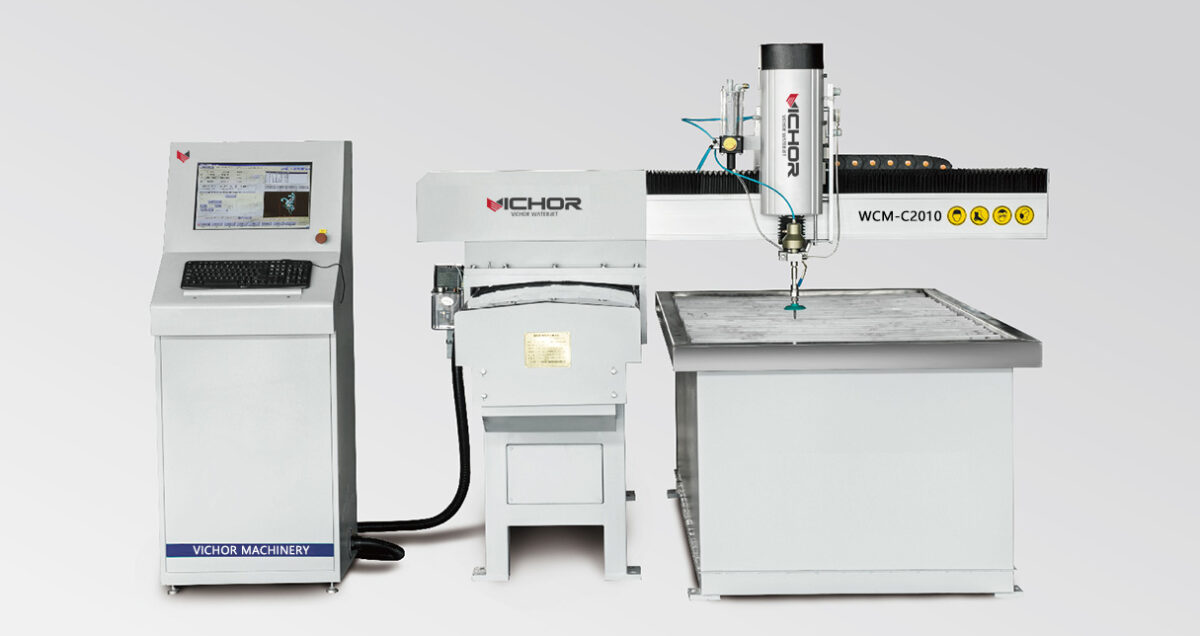
The Ultimate Guide to Flow Waterjet Machine: Benefits, Applications, and Common Issues
A flow waterjet machine represents one of the most versatile and powerful tools in modern manufacturing and fabrication. Utilizing a high-pressure stream of water, often mixed with abrasive materials, this technology can cut through a vast array of materials with precision and efficiency. Unlike thermal cutting methods, waterjet cutting does not generate heat, preventing material distortion and preserving the intrinsic properties of the workpiece. This makes the flow waterjet machine an invaluable asset in industries ranging from aerospace to art and design.
The core principle behind a flow waterjet machine is relatively straightforward. Water is pressurized to extreme levels, typically between 60,000 to 90,000 psi, and then forced through a small diamond or sapphire nozzle. This creates a supersonic stream that erodes the material it contacts. For cutting harder substances like metals, stone, or ceramics, an abrasive garnet is introduced into the stream, dramatically enhancing its cutting power. The result is a clean, precise cut on virtually any material.
This article delves deep into the world of flow waterjet machine technology. We will explore its fundamental workings, significant advantages, diverse applications, key selection criteria, and the most common challenges users face. Whether you are a seasoned engineer or a curious newcomer, this comprehensive guide will provide you with the essential knowledge to understand and appreciate this remarkable technology.
How a Flow Waterjet Machine Works
Understanding the internal mechanics of a flow waterjet machine is key to appreciating its capabilities. The process can be broken down into a few critical stages, each integral to achieving a perfect cut.
The first component is the intensifier pump, the heart of the system. This pump uses hydraulic power to pressurize ordinary tap water to the immense levels required. It operates by moving a large hydraulic piston connected to a smaller water piston. The difference in surface area between the two pistons creates the ultra-high pressure, multiplying the input pressure many times over. This pressurized water is then stored in a special tube called an accumulator, which ensures a consistent, pulseless flow to the cutting head.
Next, the high-pressure water travels through rigid tubing to the cutting head. Here, it passes through a jewel orifice, usually made from diamond or sapphire, which focuses the water into a coherent, ultra-fast jet. If the application requires cutting hard materials, the flow waterjet machine introduces a precise amount of abrasive garnet into the stream. This happens in a mixing tube, immediately downstream from the orifice. The abrasive particles are accelerated by the water jet, creating a powerful erosive stream capable of slicing through thick, resilient materials.
Finally, the cutting head is mounted on a CNC (Computer Numerical Control) gantry system. This allows for incredibly precise movement along the X, Y, and Z axes, enabling the machine to follow complex digital designs with accuracies within a few thousandths of an inch. The CNC system translates a CAD (Computer-Aided Design) file into cutting paths, ensuring every cut is exactly as designed. This combination of immense pressure, abrasive action, and precise motion control is what makes the flow waterjet machine so effective and versatile.
Key Advantages of Using a Flow Waterjet Machine
The adoption of flow waterjet machine technology offers a multitude of benefits over traditional cutting methods like laser, plasma, or mechanical cutting. These advantages make it a preferred choice for many fabrication shops.
1. Cold Cutting Process: The most significant advantage is that waterjet cutting is a cold process. It does not generate heat-affected zones (HAZ), which can alter the metallurgical properties of metals, cause warping, or create harmful fumes. This allows for the cutting of heat-sensitive materials like titanium, aluminum, and even plastics without any thermal distortion.
2. Material Versatility: A flow waterjet machine can cut virtually any material. From soft, delicate substances like foam, rubber, and food products to incredibly hard ones like granite, tool steel, and bulletproof glass, the waterjet handles them all. Simply switching between pure water (for soft materials) and abrasive water (for hard materials) is all that’s required.
3. High Precision and Quality: Waterjets produce exceptionally accurate cuts with a smooth surface finish. The kerf (width of the cut) is very narrow, minimizing material waste. The ability to cut complex shapes and intricate details with sharp corners and no tooling marks is a huge advantage for precision manufacturing.
4. Environmental Friendliness: The process is generally environmentally friendly. It does not produce hazardous gases or radiation. The primary waste product is a slurry of water and spent abrasive, which is non-toxic and can often be recycled or disposed of safely. Furthermore, because it produces minimal waste material, it contributes to sustainable manufacturing practices.
5. Minimal Setup and Quick Prototyping: Unlike die-cutting or punching, waterjet cutting requires no custom tooling. This eliminates the cost and time associated with creating hard tools. A new design can be loaded into the CNC controller and cut immediately, making it ideal for rapid prototyping, one-off parts, and short production runs.
Common Applications Across Industries
The unique capabilities of the flow waterjet machine have led to its widespread adoption across a diverse range of industries. Its ability to cut such a wide variety of materials makes it a universal fabrication tool.
Aerospace and Aviation: In this high-stakes industry, precision and material integrity are paramount. Waterjets are used to cut intricate components from aluminum, titanium, carbon fiber composites, and other advanced alloys. The cold-cutting process ensures no weakening of the materials, which is critical for flight safety.
Architecture and Art: Designers and artists leverage the flow waterjet machine to create complex patterns, signs, sculptures, and architectural elements from metal, stone, glass, and wood. The technology allows them to bring their most intricate designs to life with a level of detail that is difficult to achieve with other methods.
Automotive Manufacturing: From cutting interior components like gaskets and carpets with pure water to slicing through body panels and fiberglass composites with abrasive, the automotive industry relies on waterjets for both prototyping and production. They are also used for cutting custom parts for luxury and racing vehicles.
Food Processing: In a completely different application, pure waterjet systems are used in the food industry to cut products like cakes, frozen foods, fish, and poultry. The sterile, cold cutting process prevents bacterial growth and does not alter the food’s taste or texture, ensuring product quality and safety.
Mining and Machinery: For heavy industries, waterjets are used to cut thick, wear-resistant materials used in machinery and mining equipment. They can cut through several inches of steel, iron, and other hard metals to create large parts with high precision.
Factors to Consider When Choosing a Flow Waterjet Machine
Investing in a flow waterjet machine is a significant decision. Several key factors should be evaluated to ensure you select the right system for your specific needs and maximize your return on investment.
1. Pump Pressure and Horsepower: The pump is the core of the system. Higher pressure (e.g., 90,000 psi vs. 60,000 psi) translates to faster cutting speeds, especially on thicker materials. Horsepower (HP) rating also directly influences cutting performance. Assess the types and thicknesses of materials you most commonly work with to determine the necessary pressure and HP.
2. Table Size and Configuration: The cutting table’s size determines the maximum dimensions of the material you can process. Consider both your current and anticipated future needs. Additionally, the table’s configuration—such as a moving bridge or a stationary table with a moving gantry—can impact usability and floor space requirements.
3. Control Software and Automation: The CNC software controls the machine’s movement and functionality. Look for user-friendly software that supports standard file formats (like DXF and DWG) and offers features like nesting (arranging parts to minimize waste) and automated height control to maintain optimal cutting distance.
4. Abrasive Delivery System: The method of storing and delivering abrasive garnet affects efficiency and ease of use. Large, automated hopper systems reduce the frequency of refilling, while smaller manual systems might be sufficient for low-volume shops.
5. Maintenance and Support: Like any sophisticated machinery, a flow waterjet machine requires regular maintenance. Consider the manufacturer’s reputation for reliability, the availability of spare parts, and the quality of their technical support and service network. Downtime can be costly, so reliable support is crucial.
Common Problems and Troubleshooting for Flow Waterjet Machine
Even the most robust flow waterjet machine can encounter issues. Understanding these common problems and their solutions is essential for maintaining productivity and minimizing downtime.
1. Low Cutting Pressure or Power: This is a frequent issue that results in slow cutting speeds and poor edge quality. Causes can include worn intensifier pump seals, a clogged inlet water filter, a malfunctioning unloader valve, or issues with the hydraulic fluid. Regular inspection and preventive maintenance of the pump are the best defenses.
2. Abrasive Feed Issues: Inconsistent or no abrasive flow will severely hamper cutting ability. Problems often stem from a clogged abrasive delivery line, moisture in the abrasive hopper (causing clumping), an empty hopper, or a worn metering valve. Keeping the abrasive dry and the delivery system clean is vital.
3. Nozzle and Orifice Wear: The jewel orifice and the mixing tube (nozzle) are consumable parts that wear out over time. A worn orifice will produce a poorly focused jet, while a worn mixing tube will create a flared stream, both leading to a wider kerf and reduced cutting precision. Monitoring cut quality and replacing these components at recommended intervals is necessary for consistent performance.
4. Poor Edge Quality (Streaking or Waviness): If the cut edge develops vertical streaks or a wavy pattern, it often indicates a problem with the abrasive feed or a worn nozzle. However, it can also be caused by the cutting head moving too fast for the material thickness or a misaligned cutting head. Optimizing feed rates and checking component alignment usually resolves this.
5. CNC and Software Errors: The machine may not follow the intended cutting path due to software glitches, incorrect file formatting, or mechanical issues with the drive system (e.g., loose belts, faulty servo motors). Ensuring files are clean and error-free, and regularly maintaining the mechanical components of the CNC gantry, can prevent these problems.
By implementing a rigorous preventive maintenance schedule and training operators to recognize the early signs of these issues, you can ensure your flow waterjet machine operates at peak efficiency for years to come.
The flow waterjet machine stands as a testament to engineering ingenuity, offering an unparalleled combination of versatility, precision, and power. Its cold-cutting technology unlocks possibilities that are simply unachievable with thermal or mechanical methods, making it an indispensable tool across countless industries. From crafting delicate artistic pieces to manufacturing robust aerospace components, the applications are nearly limitless.
While the initial investment and ongoing maintenance require careful consideration, the benefits—including reduced material waste, no heat distortion, and extreme material versatility—deliver a compelling return on investment. By understanding its operation, advantages, and the common challenges it may present, businesses can make informed decisions and fully leverage the capabilities of their flow waterjet machine. As technology continues to advance, we can expect these machines to become even more efficient, user-friendly, and integral to the future of manufacturing and design.
continue reading
Related Posts
- 1089 words5.5 min read




